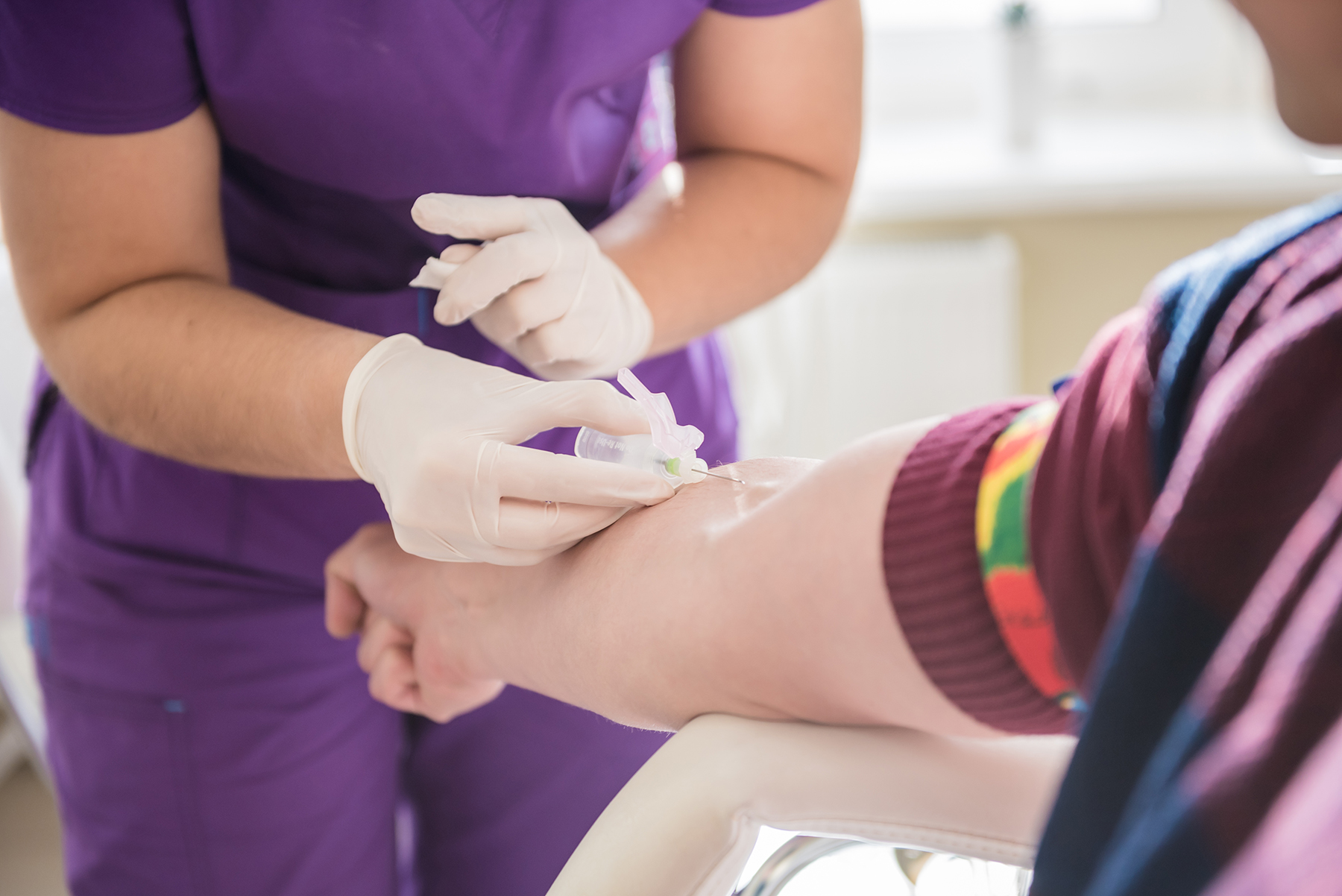Prostate Cancer: What is the 4Kscore?


A test, known as the 4Kscore, could help from 30- to 58-percent of men could avoid an unnecessary prostate cancer biopsy.
It has been shown to reliably predict the likelihood of a man’s prostate cancer spreading to other parts of his body in the next 20 years. The results offer degrees of risk that can be shared and discussed with a patient.
“This is a large step forward for the field,” says Dr. Oleksandr Kryvenko, a urology specialist at Sylvester Comprehensive Cancer Center and the University of Miami Health System. “More than 12 percent of all men will develop prostate cancer in their lives. A much smaller number of these men will require a biopsy, as their risk for a significant cancer is low,” he explains. “This test can give men the information they need to make more informed care decisions.”
Until now, a man’s choices were very limited, Dr. Kryvenko adds.
“If you had an elevated prostate specific antigen (PSA) blood test result, and your doctor felt a nodule or growth during a digital rectal exam (DRE), nine times out of 10 you would be recommended for a biopsy,” he says.
What’s the problem with a biopsy?
During a core needle biopsy, a thin, hollow needle is used to remove several small pieces of prostate tissue. The procedure can cause anxiety, pain, bleeding and/or infection in some patients. The core needle biopsy is still standard procedure for men deemed high-risk. But the 4Kscore test provides a way to weed out men who may have far less aggressive prostate cancers.
“This test offers additional knowledge,” says Kryvenko. “It lets us tell men if their cancers are likely to be fast-growing, and a threat to their lives.”
What does 4Kscore measure?
The 4Kscore takes the results of four blood tests and factors in a man’s age, DRE results, and if he had a prior biopsy. A number is created. It reflects the percentage likelihood that if that patient had a biopsy, an aggressive prostate cancer would be found.
The tests included in a 4Kscore assessment are measures of Total PSA (PSA molecules attached to proteins in the blood), Free PSA (free floating PSA molecules in the blood), Intact PSA (currently inactive PSA molecules in the blood) and of Human Kallikrein 2 (or hK2)—a genetic cousin to PSA.
Depending on the result, a low-risk patient can continue to have his PSA results monitored, without proceeding to biopsy or treatment. A high-risk patient can choose to have a biopsy performed. The results of the biopsy then help guide and direct the most appropriate treatment plan.
Dr. Kryvenko offers that the 4Kscore test has also been shown to predict the presence of aggressive cancer cells not seen in a biopsy.
“As pathologists, we interpret what we see under a microscope as best as we can. But sometimes, there are things we cannot see or predict. The 4Kscore test can tell us if a man may have aggressive prostate cancer cells growing somewhere else, but that have not yet surfaced. It is data, not human interpretation.”
Before it came into use, the 4Kscore test was studied in clinical research of 10,000 men, and proved to be extremely accurate.
After that, the test was used with an additional 1,000 patients across the country, including local patients with a consistent level of accuracy.
A retrospective study was later done, looking at men who archived their blood when they were in their 50s, says Dr. Sanoj Punnen, a urologist with Sylvester. The blood was studied 20 to 30 years later using PSA tests and configuring 4Kscore results.
“We found that among those identified by their PSA tests to be at risk for prostate cancer, the 4Kscores accurately selected those who were at risk of metastatic prostate cancer 20 years later,” he says.
Dr. Punnen and his colleagues also tested the 4Kscore test in African-American men—a group that was not initially part of the clinical research. A total of 366 cases were reviewed from eight Veterans Affairs hospitals in Florida from July 2015 through October 2016. The result? The test was accurate for all men, regardless of race.
“This finding was especially important to us,” adds Dr. Punnen. “African American men are more at-risk for prostate cancer, and are more than twice as likely to die of the disease than Caucasian men, and over five times as likely to die of prostate cancer than Asian Americans.”
Which men need the test?
All men, according to Drs. Kryvenko and Punnen, should continue to follow national guidelines for prostate cancer screening, based on age, race, family history and other risk factors. The digital rectal exam (DRE) and the PSA test remain the first two steps of screening.
“The 4Kscore test is an option after the DRE and PSA tests,” says Dr. Punnen. “If after PSA blood testing, your doctor says that a surgical biopsy may be needed to check for prostate cancer, that is when a 4Kscore test may help.”
Of interest to men already diagnosed with prostate cancer is another discovery by researchers at Sylvester.
The findings could lead to new therapies for prostate cancer patients with few options.
Men with prostate cancer are often given androgen deprivation therapy, which blocks the hormones that cause cancer growth. Unfortunately, over time, tumors change by increasing the number of androgen receptors and adopting other mechanisms to resist treatment.
Working with animal models, the researchers demonstrated that that S-nitrosoglutathione (GSNO), a compound that increases nitric oxide (NO) levels, suppresses castration-resistant prostate cancer and has a major impact on tumor microenvironments. Their findings were published in the journal Proceedings of the National Academy of Sciences.
“By using the nitric oxide donor GSNO, we increased nitric oxide levels and suppressed the growth of this particular type of prostate cancer,” says Dr. Ranjith Ramasamy, senior author of the study.
According to Dr. Himanshu Arora, a researcher in urology and first author of the manuscript, the research generated another hopeful finding.
“Even more important, the tumors did not develop further resistance that commonly occurs with most therapies currently available for prostate cancer.”
These findings could have a significant impact in a relatively short time. GSNO is already in clinical trials for asthma and pulmonary fibrosis. With additional work, the compound could be used against castration-resistant prostate cancer, as well as other tumor types.
For more information, visit the click here, or call 844-324-HOPE (4673) to request an appointment.
Written by John Senall, a staff writer at UMiami Health News
Tags: 4k score, cancer screening, castration-resistant prostate cancer, Dr. Himanshu Arora, Dr. Oleksandr Kryvenko, Dr. Ranjith Ramasamy, Dr. Sanoj Punnen, nitric oxide, prostate cancer
